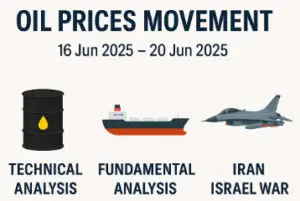How the Iran–Israel War Is Impacting Amazon (AMZN): A Deep Dive into War Cloud Strategy and Geopolitical Exposure
In the high-stakes realm of modern warfare, cloud computing is no longer just about data storage—it’s a strategic asset. With the recent Iran–Israel war intensifying since mid-June 2025, Amazon’s cloud infrastructure has found itself at the center of a geopolitical storm. This article explores in depth how the Amazon war cloud is shaping global conflict, and why AMZN conflict impact matters to investors, activists, and the wider public.
1. What Is Amazon’s “War Cloud”?
Under Project Nimbus, a $1.2 billion agreement signed in April 2021, Amazon Web Services (AWS) partnered with Google to build a sovereign cloud platform for the Israeli government—covering defense, intelligence and other sensitive tasks (wsj.com, en.wikipedia.org).
▶️ In the current Iran–Israel war context, AWS is serving as a high-capacity repository and processing hub for Israeli military intelligence, including:
-
Storing mass surveillance data—from satellite imagery to audio recordings—used in intelligence analysis (business-humanrights.org, 972mag.com).
-
Supporting real-time drone/feed integrations and AI-assisted targeting systems (investors.com).
-
Providing “endless storage” required for rapid war-time ops and assisting in strike confirmations (business-humanrights.org).
This militarized use of AWS is now widely referred to as the Amazon war cloud—a term that encompasses both the tech and the geopolitical ramifications of AWS’s role in the conflict.
2. Cloud Tech in Action: The Iran–Israel War Scenario
a. Surveillance & Targeting Support
Multiple intelligence veterans confirm that AWS servers are being used to process large volumes of war-time intelligence in the Iran–Israel conflict (business-humanrights.org). For example:
-
Analysts “order” target data via AWS to validate airstrikes and identify high-value Iranian military figures .
-
Near real-time aggregation—from satellites, drones, intercepts—relies heavily on AWS’s GPU-backed platforms to model enemy movements and predict escalation scenarios.
b. Surge Demand, Surge Revenues
Conflict triggers spikes in data storage and computing needs. AWS likely benefits from emergency expansions within Project Nimbus to support:
-
Rapid provisioning for middle-tier IDF intelligence units.
-
Short-term spikes in revenue tied to cloud usage during hostilities.
This dynamic extends beyond Israel—other regional players (e.g. UAE, Saudi Arabia) may now also explore AWS for similar capabilities, viewing the Amazon war cloud as a defense tool.
3. Market Reaction: How is AMZN Faring?
Although Amazon’s overall stock isn’t rallying like pure defense contractors, its shares and futures benefit indirectly from AWS’s war-time positioning:
-
On June 16, U.S. futures rose in a broad tech rally as investors speculated on AWS’s upside from increased defense-related demand (theguardian.com, investors.com).
-
AWS’s strategic value adds more depth to Amazon beyond retail and advertising; it now carries a geopolitical insurance premium.
On the flip side:
-
Escalation fears (e.g. U.S. involvement in the war) dampen overall equity sentiment—even leaders like Amazon see brief dips .
The combination of upside from AWS defense exposure and downside from macro risk defines the AMZN conflict impact on the stock.
4. Ethical, Regulatory, and Public Fallout
Conflict use of AWS has triggered backlash across multiple fronts:
🛡️ Activist Pressure
-
Project Nimbus workers at Amazon and Google have protested, citing complicity in warfare and potential human rights abuses (nasdaq.com, business-humanrights.org, wired.com).
-
Groups like “No Tech for Apartheid” continue organizing global campaigns to pressure Amazon to withdraw support (en.wikipedia.org).
🧑⚖️ Legal & Compliance Risks
-
With rising AI-targeting and surveillance accusations, governments and human rights bodies may investigate AWS’s role in confirming airstrikes.
-
Amazon must balance contractual obligations under Nimbus with terms of service—some clauses forbid supporting “violence or weapon systems” (en.wikipedia.org).
🌐 Reputational Strain
-
Public opinion is increasingly sensitive to private tech supporting war efforts.
-
Activist coverage could threaten Amazon’s consumer brand and relationships with global partners, even outside AWS.
5. Investment Outlook: Amazon at the Intersection of Cloud and Conflict
✅ Strengths
-
AWS continues to be a major growth driver, powered now also by defense and geo-risk applications.
-
Nimbus positions AWS uniquely as a sovereign-ready cloud provider—potentially a blueprint for other allied nations.
⚠️ Risks
-
Public backlash could result in protests, reputational hits, or even divestment from institutional funds.
-
Escalation in the Middle East could trigger market-wide pullbacks, overshadowing AWS-specific gains.
Here’s the current snapshot of Amazon.com (AMZN) for context:
Stock market information for Amazon.com Inc. (AMZN)
- Amazon.com Inc. is a equity in the USA market.
- The price is 212.52 USD currently with a change of -2.26 USD (-0.01%) from the previous close.
- The latest open price was 215.04 USD and the intraday volume is 44360509.
- The intraday high is 217.95 USD and the intraday low is 212.52 USD.
- The latest trade time is Thursday, June 19, 05:15:00 +0500.
6. 📌 Share Movement Snapshot
-
Current price (June 19, 2025): $212.52, down 1.3% from a recent high, reflecting cautious investor sentiment amid geopolitical tensions.
-
Intraday range: $212.52–$217.95, with volume hovering around 44 million shares.
-
Market shifts:
-
June 13: Tech stocks led losses—Nasdaq down >1%, and Amazon slid ~1.3% as markets feared U.S. involvement (reuters.com).
-
June 16: Oil surged and defense stocks rallied, keeping Amazon’s share declines limited—despite broader risk-off sentiment .
-
7. Why AWS Is Called the Amazon War Cloud
Under Project Nimbus, AWS and Google were contracted by Israel in April 2021 to build a secure sovereign cloud (en.wikipedia.org). Today, that cloud is at the center of border-to-battlefield data processing.
-
Mass surveillance storage: Satellites, drones, audio intercepts—all funneled into AWS servers (972mag.com).
-
AI-powered targeting: GPU-backed computing helps commanders make split-second strike decisions .
-
High-demand resilience: During peak operations—such as the June 13 IDF air strikes—AWS kicked in emergency capacity to handle thousands of simultaneous war-room users .
This militarization of cloud resources coined the term Amazon war cloud—an emblem of a shift in modern combat.
8. AMZN Conflict Impact: Financial Upside and Volatility
✅ Revenue and Demand Surge
-
War zones equal heavy data usage: AWS sees spikes in cloud provisioning, storage, and AI workloads under Nimbus (972mag.com).
-
Neighboring countries watching this conflict may initiate similar contracts, giving AWS a potential geopolitical sales pipeline.
⚠️ Stock Reaction & Market Volatility
-
Short-term dips: June 13 saw Amazon shares fall 1.3% as global risk-off sentiment spread across Nasdaq (reuters.com).
-
Tech resilience: June 16 rally in energy and defense stocks cushioned Amazon’s slides—showing its relative defensive strength (investopedia.com).
-
Overall, the AMZN conflict impact is one of muted volatility, not runaway growth—reflecting mixed forces.
8. Ethical & Regulatory Fallout
While the Amazon war cloud serves strategic defense, it also triggers public resistance:
-
Employee protests: Over 300 Amazon workers signed letters opposing Nimbus, citing human rights concerns (theguardian.com).
-
Activist groups, including No Tech for Apartheid, are pushing for Amazon to sever military ties (en.wikipedia.org).
-
Regulatory scrutiny may follow if AWS is found to enable targeted airstrikes—AWS’s terms prohibit facilitating weapons systems (en.wikipedia.org).
Thus, while AWS profits, Amazon’s consumer reputation and employee morale may face growing strains.
9. Broader Geopolitical & Market Landscape
-
Oil surge: Crude hit 4½-month highs (up 7–11%) on war fears (morningstar.com), boosting energy stocks while fueling inflation concerns.
-
Safe-haven flows: Dollar and gold strengthened; equities wobbled (reuters.com, reuters.com).
-
Defense sector boost: Lockheed, RTX, Northrop Grumman rallied 2–3% amid rising global defense spend (reuters.com).
Amazon, with AMZN conflict impact, straddles a line—benefitting from AWS demand while facing macro risk tied to war escalation.
10. 🔍 Key Figures & Market Indicators
| Date | Event | AMZN Move |
|---|---|---|
| Jun 13 | Israel air strikes on Iran → market jitters | –1.3% (Nasdaq: –1.16%) (reuters.com, reuters.com) |
| Jun 16 | Oil surges, defense rally; war subsides slightly | Stabilized near $215; strong session for tech |
| Jun 19 | Dollar safe haven → equity markets rangebound | Trading $212–218, volume high ☁ |
11.✅ Final Analysis: Opportunity and Risk
-
Upside: AWS sees real demand from war infrastructure. Nimbus acts as a template for future sovereign contracts.
-
Downside: Reputational risks, employee protests, and ethical scrutiny may erode Amazon’s broader brand.
-
Stocks: Short-term swings reflect trader sentiment; as conflict stabilizes, AWS defense revenue may counterbalance market headwinds.
The Iran–Israel war has elevated AWS from a commercial cloud service to a geostrategic asset—embodied by the Amazon war cloud. That transformation is reshaping AMZN conflict impact—fueling both opportunity through defense revenues and risk through regulatory, reputational, and market volatility channels.
For investors and strategists, the question isn’t just “How big is AWS?” but “How sustainable is its wartime footprint?” Will Amazon continue to benefit from this new frontier, or will backlash force a course correction?



